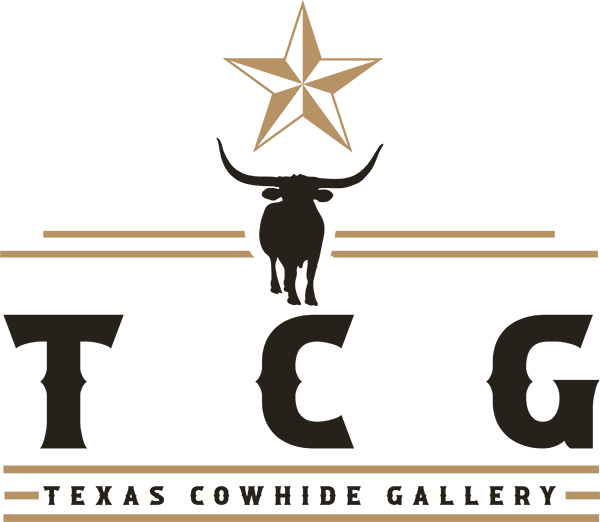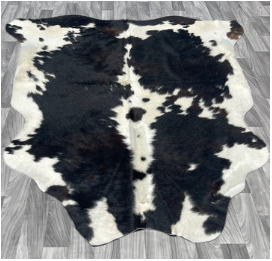Cowhide rugs are manufactured using a multi-stage process that begins with sourcing raw materials and finishing with tanning. Homeowners are warming up to the idea of having authentic and colored cowhide rugs in their homes to amplify the beauty of their living space.
The leather industry sources its raw materials from regulated tanneries and farmers while adhering to strict ethical practices. This is to ensure that animals are not abused in any way and raised under healthy conditions.
The best cowhides are selected to make cowhide products, such as rugs, bags, wallets, shoes, etc. Any defective products may be utilized for low-quality products, but nothing goes to waste.
The manufacturing process takes some preparation and planning. Business vendors work alongside experienced manufacturers to create authentic cowhide rugs for their customers.
Let’s explore the craftsmanship behind cowhide rugs and how they are made.
The Manufacturing Process for Cowhide Rugs
The manufacturing process for cowhide rugs isn’t too complicated. However, it involves a few steps and attention to detail when making premium-quality and authentic cowhide rugs.
Businesses have a responsibility to adopt strict ethical practices when creating and selling cowhide rugs. They can find quality manufacturers and strike a deal, but they must be proactive about finding the right people to work with.

This is because a business’s value is inextricably linked with its products. If product quality is compromised, there will always be a lack of new and repeat customers. However, when businesses take time to find the right manufacturers that hold themselves to high standards, they can produce high-end products for their customers.
Let’s dive into the manufacturing process for authentic and colored cowhide rugs.
1. Cowhide Sourcing
The first part of the manufacturing process for producing cowhide rugs is to source cowhide. Businesses are responsible for finding regulated tanneries and farmers that practice the ethical killing of animals.
Finding the best cowhides is often a struggle since cows accumulate scratches and ‘defects’ throughout their lives. Calf hides are less likely to be damaged in these ways, making them a good option for making calf hide rugs.
Since cowhides are available in various colors and patterns, businesses must find the ones that will turn into the best rugs. If they already have an abundance of white and black colors, they would need to source brown and tri-colored varieties.
There are ethical and environmental factors to consider when sourcing these cowhides. The best businesses only sell eco-friendly products and take their sourcing very seriously. They might travel to places like Brazil, Columbia, and Argentina to find the highest quality cowhides available.
Regulated tanneries adhere to strict practices that make them the best places to source cowhides from. Farmers often sell beef to the meat industry and dispose of cowhides themselves. However, there is now a target market for cowhides where businesses are keen to acquire only the highest quality hides as animal by-products.

So, businesses must consider ethics, quality, and environmental concerns when sourcing cowhides. These are available from regulated tanneries and farmers, but vendors must go the extra mile to find suppliers and manufacturers that adhere to high standards.
2. Pre-Tanning
The pre-tanning stage of manufacturing colored and authentic cowhide rugs is very important. It involves removing any excess fat and muscle from the cowhides to keep them fresh, hygienic, and supple throughout the process.
Then, manufacturers must rub salt on the cowhide, which acts almost like a preservative. Another way to protect the integrity of cowhides is to keep them away from heat and direct sunlight. The worst thing that can happen is that the cowhide starts rotting or decaying.
Once the cowhide is completely covered with salt, it is left to cure for at least two weeks, but sometimes more. Once 2-3 weeks have passed, the cowhide is cleaned by soaking it in water repeatedly until all of the salt comes off. After the cleaning process, the cowhide begins to soften, and manufacturers are tasked with the responsibility to clean any dirt and blood attached to the skin.
Once it is thoroughly cleaned, flesh and fat must be scraped off to prepare the cowhide for the next stage of the process.
3. Tanning Process
The tanning process can take an additional two to three weeks, depending on the manufacturer's preferences. Most people use the hair-on-hide method, where the cow's fur isn't removed to ensure the skin stays soft and supply for the cowhide rug. Remember that colored cowhide rugs are available with and without hair, meaning there are two essential types for buyers to choose from.
One thing to remember is that the cowhide must dry out naturally. If the process is rushed, the cowhide may lose its suppleness and accumulate damages. So, to maintain the product’s integrity, special care must be taken, and strict steps must be followed.
A complication that manufacturers must prepare for is the fact that cowhides may accidentally change colors. This isn’t extreme, but you can expect a different-colored tint to the hide. However, this can be prevented by treating the cowhide with fats and dyes, allowing it to revert to its original state. Also, this treatment helps the hide maintain its softness, which is crucial for producing authentic cowhide rugs.
The four different tanning methods used in the leather industry are bark, brain, chrome, and salt and aluminum tanning. Each of these methods has its pros and cons, so businesses must find the most compatible process for their products.
For example, chrome tanning is heavily frowned upon because it leads to many toxic compounds in leather goods, such as dioxins and phthalates. These are carcinogenic and very harmful to humans, animals, and the environment. As the awareness of the best processes increases, businesses must align themselves with the ideal practices. However, chrome tanning is still the most commercial process for tanning cowhide products.
4. Final Touches
When crafting a colored cowhide rug, manufacturers must add final touches to get the perfect colors and designs. Businesses will often convey their demands and preferences to manufacturers to create something unique.
For example, some specialty products have leopard and polar bear prints, which can be challenging to create. However, experienced manufacturers know exactly what to do, but businesses and retailers must convey their requirements clearly.
Cowhide rugs can be significantly improved visually during the final touches. Some treatments are animal-prints stencils, color dye, and acid washes. Whichever treatment is ideal for your business must be discussed with manufacturers to ensure there are no miscommunications.
Decorating Homes with Cowhide Rugs – The New Home Design Trend
Cowhide rugs have become popular in recent years due to the quality and visual appeal of these products. The highest quality rugs are available as affordable luxury items between 200 to 400 USD. Specialty products cost more and are generally hung as tapestries in bedrooms or centerpieces in living rooms.
Customers have the option to choose between hair-on and hairless varieties. Since all cowhide rugs are unique due to a cow's natural colors, there are several options to choose from. Homeowners can expect to find multi-colored rugs of all sizes and experiment with how to decorate them in their homes.
An unconventional way to use cowhide rugs in your home is to drape them over leather furniture like sofas. However, this must be done at the back to create a specific effect, and you can find all kinds of creative ideas on websites like Pinterest.
The leather industry has come a long way from claims about unethical practices. Initially, PETA skewed public perception and made it very difficult for people to purchase animal products like cowhide rugs because of the stigma of animal cruelty and environmental concerns. However, most cowhide rugs are eco-friendly products, and animals are slaughtered ethically and mainly for their meat.
Cowhide is typically disposed of since the meat industry has no use for it. But businesses have begun sourcing these materials since they can be used to create some of the most breathtaking cowhide products in the market.
As the idea of cowhide rugs becomes accepted in mainstream society, you can expect people to adopt the style and upgrade their living conditions. This is because cowhide rugs are not only visually appealing but have many positive properties like durability, versatility, and ease of maintenance, which make them excellent options for home décor.
Cowhide Gallery Produces Authentic and Colored Cowhide Rugs
Cowhide Gallery sources its cowhide from regulated tanneries and farmers that adhere to high standards for raising their animals. We produce some of the finest colored cowhide rugs, so our customers have a variety of options to choose from.
Our products are eco-friendly, and we ensure there is no animal cruelty involved.
If you're looking to get your hands on some of the most authentic cowhide rugs, as well as similar products, you can explore our website for more options.

